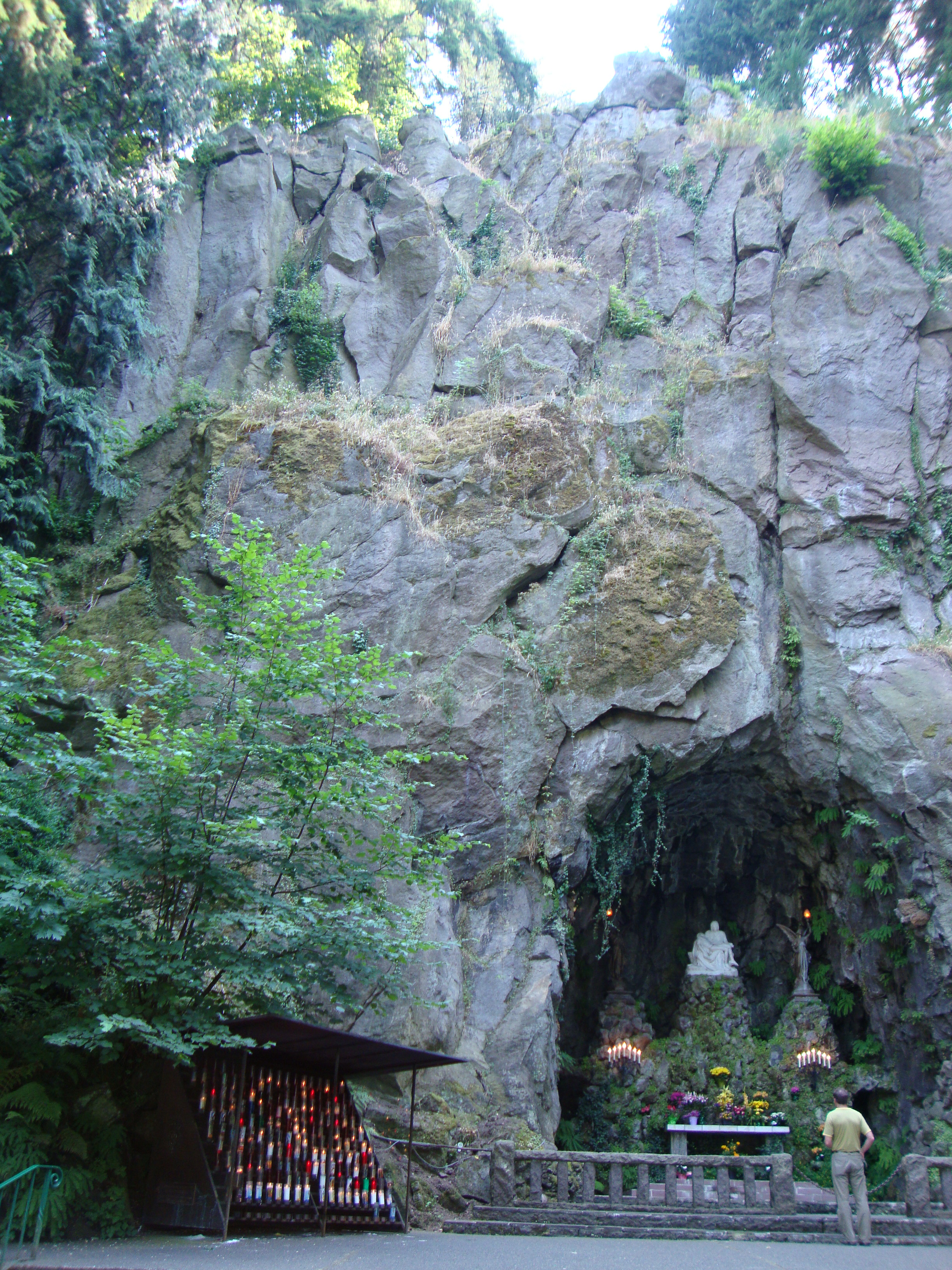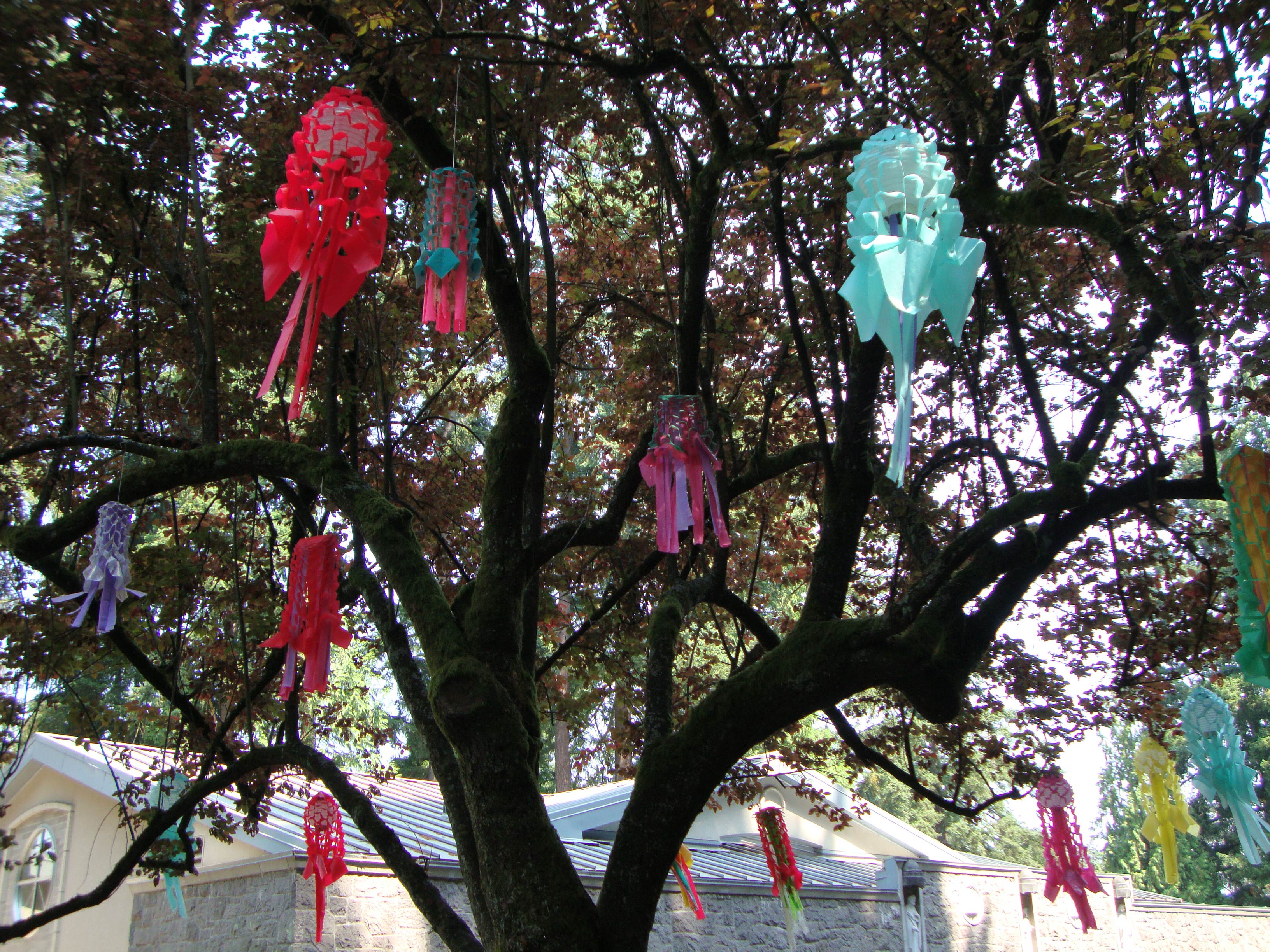by Nicole Sheets
This essay is part of a work in progress about my relationship with the Blessed Virgin Mary and her iconography, superpowers, and lore. Growing up in a conservative evangelical church, I mostly had contact with the BVM as a chess piece in the nativity scene or in youth group Christmas pageants. I was a tall kid. I usually played an angel or, in a pinch, Joseph, but not the lord’s handmaiden.
You mean the gay bar? Paula asked when I called her from a gas station outside Portland and told her that John and I were headed for The Grotto.
We were patching our itinerary on the fly, a mix of Lonely Planet routes through Oregon: hot springs and microbrews and theater, a dusting of Lewis & Clark, served on a doily of waterfalls.
I’d hoped to add some enlightenment to the mix in Portland at the Velveteria, a velvet painting museum. (The museum is closed, we’d find out later, and is now a traveling exhibit).
We’d have a little more luck at the 24 Hour Church of Elvis. As my friend Barbara said when she saw pictures, I hate those other Churches of Elvis where you show up at 5 p.m. and they’re closing the doors. There’s no sanctuary, but there is a gaudy kiosk complete with a coin-op confessional and—much underutilized devotional practice—Barbies on stationary bikes.
But first: out of all the sites in this hipster kingdom, I wanted the Grotto on the northeast side of town. I’d misread the guidebook blurb and walked in expecting something like the Jesus in Rio, a tall kooky folky big proud basalt Mary with her humble head bowed toward Mt. Hood.
The Grotto is a grotto, a snug cave bitten into the rock face, complete with tufty plants and a replica of Michaelangelo’s Pieta.
Nearby, you can ride a tall elevator up to the cliff above the cave. John headed for the gardens. I lingered in the meditation chapel, slumped in a battered black leather armchair (not the furniture most conducive to meditation), and stared past another replica of the Pieta to the Columbia River and the Portland airport.
 If the statuary of the place was any clue, I was probably supposed to be meditating on the sufferings of Christ and his mother. But my experience was not unlike one I had a few summers ago on the Camino de Santiago in Spain. I only walked the last 80 miles or so, and during that week I was struck by how basic my thoughts were on this spiritual path. Sure, I was waiting for revelation, or for the face of Saint James to appear on my breakfast toast. But mostly I was staring at the countryside, laundry strung out like silent cloth tongues, a man sleeping under the faint shadow of a small tree. I thought about how my feet hurt. I envisioned lunch’s crusty bread.
If the statuary of the place was any clue, I was probably supposed to be meditating on the sufferings of Christ and his mother. But my experience was not unlike one I had a few summers ago on the Camino de Santiago in Spain. I only walked the last 80 miles or so, and during that week I was struck by how basic my thoughts were on this spiritual path. Sure, I was waiting for revelation, or for the face of Saint James to appear on my breakfast toast. But mostly I was staring at the countryside, laundry strung out like silent cloth tongues, a man sleeping under the faint shadow of a small tree. I thought about how my feet hurt. I envisioned lunch’s crusty bread.
At the Grotto’s meditation chapel, I watched airplanes, I enjoyed a moment to myself on a long road trip, I saw a sign for IKEA and remembered I needed a new table.
As Lonely Planet points out, the Grotto has a more soberminded name: The Sanctuary of Our Sorrowful Mother. I knew several sorrowful mothers and fathers. Just that morning I’d received an email that a college friend’s new baby had died. I visited another friend who’d had three miscarriages. I stared at that bronze copy of Mary bearing the slain body of her son, and I whispered a quick prayer for these friends. The large words above the doors of the Chapel of Mary reassembled in my mind, too: Behold Thy Mother. I thought of my own mom, all the way across the country, and sent out some love to her, too.
I got what I wanted at The Grotto: colored lanterns like hamstrung kites in a tree near the gift shop, four nuns in habits eating bag lunches near the visitors center.
And I got my Mary fix—two Pieta Marys, and a Mary on a clifftop pedestal, presiding over the grotto in her honor. I’m intrigued by her stance. You can’t look at that Mary head-on. She’s sort of inaccessible. But in the gardens and chapels of the Grotto, she gives us a look at her big, broken heart.
***
Nicole Sheets just moved to Spokane and has been keeping a blog about thrift store bounty, the complex relationships we have with our belongings, and adjusting to life in the inland Northwest. Her essays have appeared or are forthcoming in Mid-American Review, Sonora Review, Tampa Review, the anthology Permanent Vacation (Bonafide Books) about working in National Parks, Western Humanities Review, Geez Magazine, and Jesus Girls: True Tales of Growing Up Female and Evangelical (Cascade Press, 2009).


One Response
This piece is fantastic, Nicole. Was the statue of Mary like a Lourdes replica?
Also – welcome to Washington!